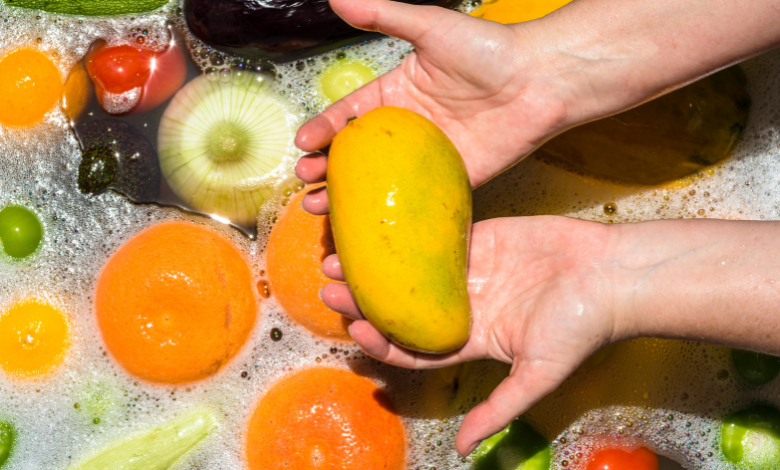
Removing pesticides from fruits and vegetables
Reducing or removing pesticides from fruits and vegetables before consumption is crucial for health, and both the National Pesticide Information Center (NPIC) and the U.S. Food and Drug Administration (FDA) provide guidelines on how to do this effectively. Here are the best methods
Washing with Water
What to Do: Rinse fruits and vegetables under cold running water
Effectiveness: Washing with water can remove some pesticide residues, dirt, and bacteria. It’s recommended to rub produce with your hands or use a soft brush for items with firm skin, like melons and cucumbers
– What to Do: Peel fruits and vegetables like apples, cucumbers, and potatoes, and trim the outer leaves of leafy vegetables like lettuce and cabbage
– Effectiveness: Peeling can remove pesticide residues that may have settled on the outer skin. However, be aware that this also removes some nutrients
Soaking in Saltwater or Vinegar Solution
– What to Do: Soak fruits and vegetables in a solution of 10% white vinegar (1 part vinegar to 9 parts water) or in saltwater for about 10-20 minutes, then rinse with clean water
Effectiveness: Studies have shown that vinegar and saltwater solutions can be more effective than water alone in reducing some pesticide residues, although not all pesticides are easily removed this way
Using a Commercial Produce Wash
What to Do: Use a produce wash available in stores, which is specifically designed to remove pesticides, wax, and other residues
Effectiveness: While these washes may be more effective than water, it’s essential to follow the manufacturer’s instructions, and there’s no guarantee they will remove all pesticide residues
Blanching
What to Do: Submerge produce in boiling water for a short period (a few seconds to a minute), then immediately transfer it to ice water to stop the cooking process
Effectiveness: Blanching can help reduce certain pesticide residues, especially on produce like green beans and broccoli, but it may affect the texture and nutrients
Scrubbing with a Brush
What to Do: Use a brush to scrub firm fruits and vegetables under running water
– Effectiveness: Scrubbing can help remove dirt and residues on the surface, especially on produce like potatoes and carrots
Drying with a Clean Cloth or Paper Towel
– What to Do: After washing, dry the produce with a clean cloth or paper towel
– Effectiveness: This can further reduce pesticide residues by removing water that may contain some of the pesticides washed off
Discarding Outer Layers
– What to Do: Discard the outer layers of leafy vegetables like lettuce, cabbage, and onions
– Effectiveness: Pesticides often accumulate on the outer layers, so removing them can significantly reduce exposure
Cooking
– What to Do: Cook fruits and vegetables by boiling, steaming, or roasting
– Effectiveness: Cooking can reduce certain pesticide levels, but it’s not effective for all types of pesticides and may alter the flavor and nutritional content of the produce
Buying Organic When Possible
– What to Do: Choose organic produce, which is grown with fewer synthetic pesticides
– Effectiveness: Organic produce tends to have lower pesticide residues, but washing is still recommended to remove soil and bacteria
Key Considerations
Wash All Produce: Even if you plan to peel it, wash the produce first to prevent transferring contaminants from the skin to the flesh when cutting
– Mixing Methods: Combining several methods, like washing, peeling, and scrubbing, can be more effective in reducing pesticide residues
These methods, recommended by health authorities like the NPIC and FDA, can help reduce pesticide exposure and make fruits and vegetables safer to eat










